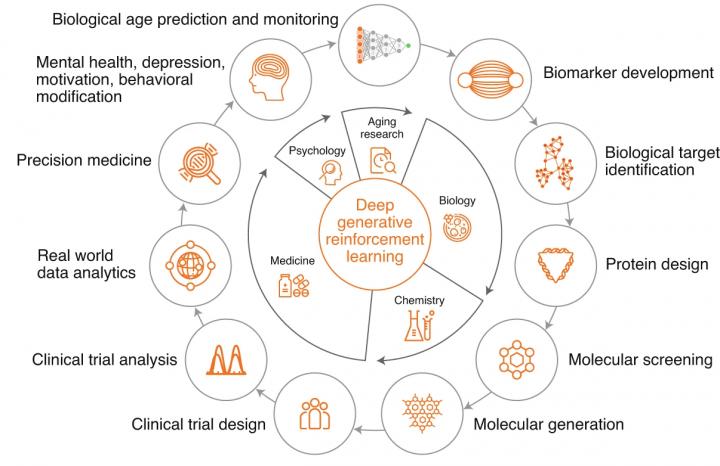Photo: web.


If the U.S. and China ever come to blows, this vessel will play a big part in the battle.
The U.S. Marine Corps is taking a completely new tack to providing fire support during amphibious landings: unmanned boats stocked full of suicide drones.
The shipbuilder Metal Shark has announced it’s building a new type of unmanned surface vessel, which the Marines plan to equip with loitering munitions. Such a boat would act as a mobile fire support platform, servicing calls for fire with salvos of drones equipped with explosive charges.
BASE opens up new possibilities in the search for cold dark matter.
The Baryon Antibaryon Symmetry Experiment (BASE) at CERN’s Antimatter Factory has set new limits on how easily axion-like particles in a narrow mass range around 2.97 neV can turn into photons, the particles of light. BASE’s new result, published by Physical Review Letters, describes this pioneering method and opens up new experimental possibilities in the search for cold dark matter.
Axions, or axion-like particles, are candidates for cold dark matter. From astrophysical observations, we believe that around 27% of the matter-energy content of the universe is made up of dark matter. These unknown particles feel the force of gravity, but they barely respond to the other fundamental forces, if they experience them at all. The best accepted theory of fundamental forces and particles, called the Standard Model of particle physics, does not contain any particles that have the right properties to be cold dark matter.
Since the Standard Model leaves many questions unanswered, physicists have proposed theories that go beyond it, some of which explain the nature of dark matter. Among such theories are those that suggest the existence of axions or axion-like particles. These theories need to be tested, and many experiments have been set up around the world to look for these particles, including at CERN. For the first time, BASE has turned the tools developed to detect single antiprotons, the antimatter equivalent of a proton, to the search for dark matter. This is especially significant as BASE was not designed for such studies.
“BASE has extremely sensitive detection systems to study the properties of single trapped antiprotons. These detectors can also be used to search for signals of particles other than those produced by antiprotons in traps. In this work, we used one of our detectors as an antenna to search for a new type of axion-like particles,” says Jack Devlin, a CERN research fellow working on the experiment.
Compared to the large detectors installed in the Large Hadron Collider (LHC), BASE is a small experiment. It is connected to CERN’s Antiproton Decelerator, which supplies it with antiprotons. BASE captures and suspends these particles in a Penning trap, a device that combines electric and strong magnetic fields. To avoid collisions with ordinary matter, the trap is operated at 5 kelvins (around-268 degrees Celsius), a temperature at which exceedingly low pressures, similar to those in deep space, are reached. In this extremely well-isolated environment, clouds of trapped antiprotons can exist for years at a time. By carefully adjusting the electric fields, the physicists at BASE can isolate individual antiprotons and move them to a separate part of the experiment. In this region, very sensitive superconducting resonant detectors can pick up the tiny electrical currents generated by single antiprotons as they move around the trap.

3D printing is a universal process in the sense that pretty much any part that can be drawn up in a CAD program can be printed, at least within a certain resolution. Machining a part on a mill or lathe, while having the advantage of greater accuracy and material options, is a slightly less universal process in that many possible designs that exist in theory could never be machined. A hollow sphere can easily be printed, but a ball could never be milled as a single part into a hollow sphere—unless you happen to have a milling machine tiny enough to fit inside the ball. But what about biological parts, and whole animals? How universal, from a design perspective, is growth?


The international team of artificial intelligence experts and medical doctors propose a framework for the application of next-generation AI to extend human longevity.
Deep Longevity Ltd.
It’s an age-old question: does money make us happier? The answer, it seems, is yes, when it comes to the links between poverty and poor mental health. The good news is that, according to a new study, targeted financial support and low-cost therapeutic interventions can help.

“The board’s first rulings concerned five cases in which Facebook had removed posts for violating its policies. And in four out of the five cases reviewed, the board voted to overturn Facebook’s original decisions. The board also called on Facebook to give users greater clarity over its policies and how it intends to enforce them.”
“For all board members, you start with the supremacy of free speech,” Alan Rusbridger, a board member and former editor-in-chief of The Guardian, said.

An anthropologist dives into the world of genetic engineering to explore whether gene-editing tools such as CRISPR fulfill the hope of redesigning our species for the better.
The Mutant Project: Inside the Global Race to Genetically Modify Humans by Eben Kirksey. St. Martin’s Press, November 2020. Excerpt previously published by Black Inc.
Surreal artwork in the hotel lobby—a gorilla peeking out of a peeled orange, smoking a cigarette; an astronaut riding a cyborg giraffe—was the backdrop for bombshell news rocking the world. In November 2018, Hong Kong’s Le Méridien Cyberport hotel became the epicenter of controversy about Jiankui He, a Chinese researcher who was staying there when a journalist revealed he had created the world’s first “edited” babies. Select experts were gathering in the hotel for the Second International Summit on Human Genome Editing—a meeting that had been called to deliberate about the future of the human species.